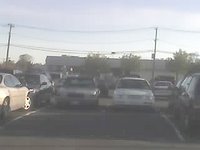Usability of Parking Spaces
 Most people don’t think a great deal about parking spaces except when they need one, and I’m positive that nobody thinks about how and why parking spaces work. I was one of them until I noticed when the affordances that designate how a parking space works breaks down.
Most people don’t think a great deal about parking spaces except when they need one, and I’m positive that nobody thinks about how and why parking spaces work. I was one of them until I noticed when the affordances that designate how a parking space works breaks down. Included is a photo of just such a breakdown. This is a commuter parking lot for the Long Island Rail Road, where the parking lot is over half full with the most desirable spots close to where the train entrances are filled. The spots you see however are not filled, and they are in a desirable location.
Before continuing, try and decipher why the spots are empty.
Parking has rules. You follow these rules and your car is safely tucked away for the day. If you break the rules, the car is ticketed or towed. Along with the basic stated rules such as “head in parking only” that are posted in the lot there less stated rules drivers learn, such as parking is allowed between lines. These lines enforce the direction and spacing of the lot. They are also meant to insure that there is adequate spacing between the cars for effective egress and entry.
Like most usability rules, you only notice them when they are broken, such as when a car parks too close (or over) the lines, or in this case where there are no lines at all.


0 Comments:
Post a Comment
<< Home